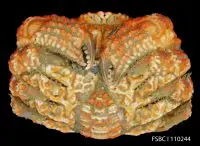Mud crab (Scylla Serrata) is native to Asia, Australia and Africa and it is one of the most important crab species from an economic standpoint. These crabs are from the family of swimming crabs. Two species of mud crab are found in Western Australia: brown and green.
Brown mud crabs (scylla olivacea) have carapace width of 15 centimeters and weigh up to 3.3 pounds.
Green mud crabs (scylla serrata) have carapace width of 30 centimeters and weigh up to 5.5 pounds.
The color of a mud crab varies from chocolate-brown to spotted green. It has a fan-shaped body appearance and its hindmost legs are just like paddles. However, these legs are not used in swimming.
Mud crab can grow more than 15 c entimeters in length. The width of the carapace of an offspring measures 24 centimeters.
entimeters in length. The width of the carapace of an offspring measures 24 centimeters.
It reaches maturity at the age of 18 to 24 months. Mating occurs in warmer months.
A female mud crab spawns eggs in batches and within a range of 2 to 5 million. The eggs are hatched after 2 to 4 weeks.
Mud crabs are widely distributed across the Indo-Pacific region. In the Indian Ocean, they are present all the way from South Africa to the Indo-Australian Archipelago. Its range also extends from Japan to Australia.
These crabs inhabit mangroves and estuaries.
Mud crabs are omnivores and eat a wide variety of food. However, the primary diet consists of ground-dwelling small creatures like worms and mollusks.
Mud crabs are cannibalistic creatures. During molting (shedding old skin), the crab is vulnerable to be eaten by other mud crabs.
Some of the predators that prey on adult mud crabs are sharks, rays, crocodiles and turtles.
Other Names: Mangrove crab, Black crab





